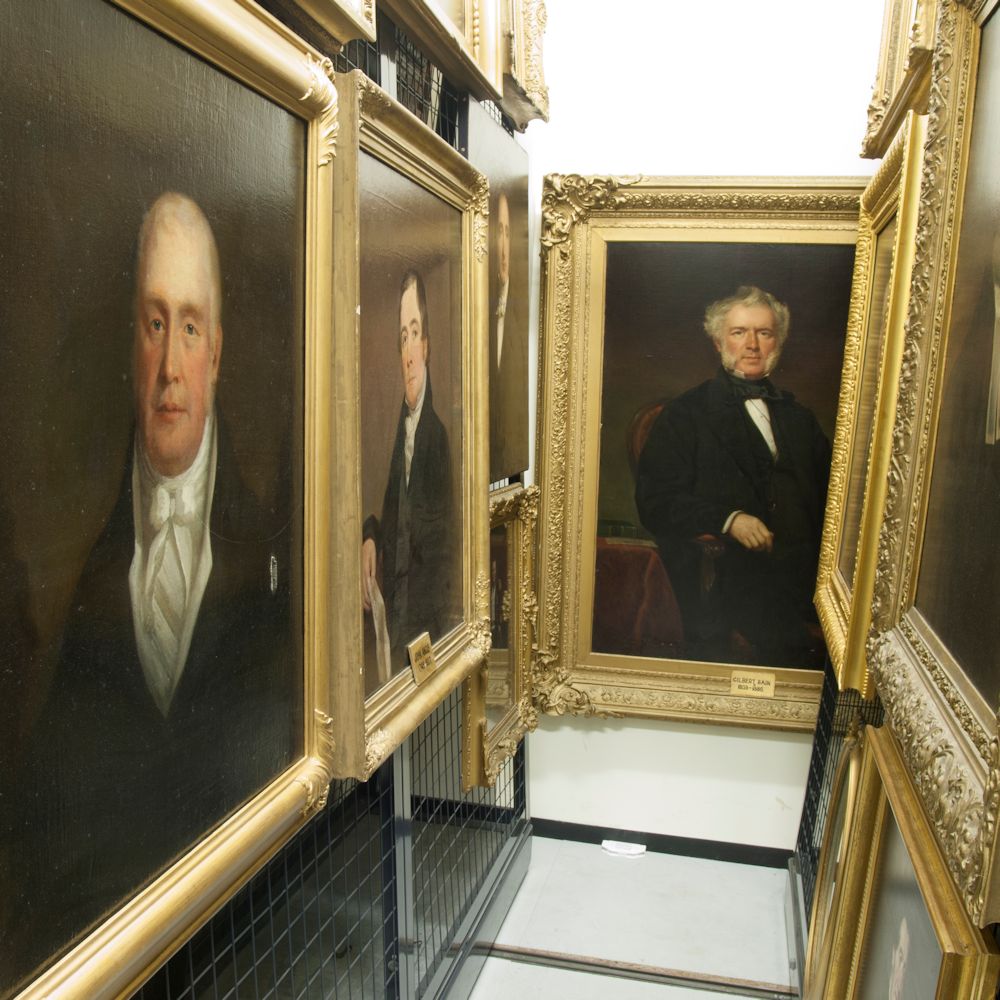Social History
The Social History collection includes artefacts from the post-traditional era, in which Shetland society became similar to lifestyles elsewhere in Britain. In this period, islanders abandoned locally-made tools, furnishings and clothing, and relied on imports. This happened roughly from 1800 onwards, getting more marked as time went on. Artefacts in this collection include cultural, religious, governmental, warfare and communications objects.
Because islanders now used items made in factories, their home and working environments came to look just like anywhere else; a lamp, pocket-watch, or gramophone used here was no different to elsewhere.
The collection is broad. There are domestic items for cooking or cleaning. There is cultural memorabilia including sports trophies, paintings and costumes from the Up-Helly-Aa festival. There are also many objects from churches and government services, primarily medical equipment and school paraphernalia.
A more serious side of life - warfare - is shown by the broad range of naval and military apparatus, uniforms, and personal effects from many battlefronts. Shetland's strong links with mainland Britain is proven by the large range of ship’s equipment from the steamer service, and an impressive selection of model ships. Imported goods stocked local shops; we have examples of all of these as well as fittings and merchandise from businesses.
There are objects that show advancing changes to urban living, such as electrical appliances, and telecommunications that connected us with the outside world. Items such as station fittings and officers’ equipment from the police force and justice service are also included in this collection.
 View Full Size
View Full Size View Full Size
View Full Size View Full Size
View Full Size